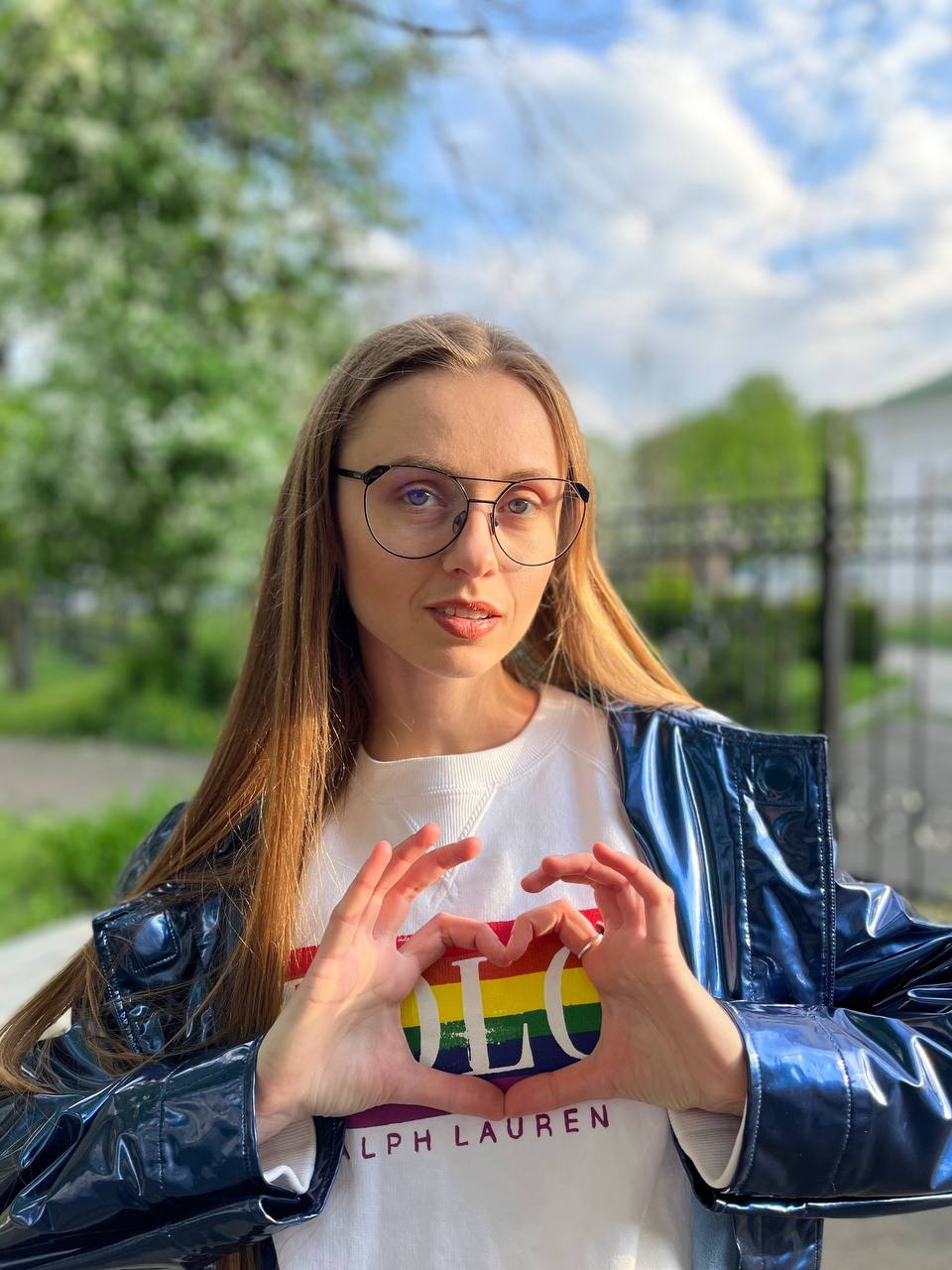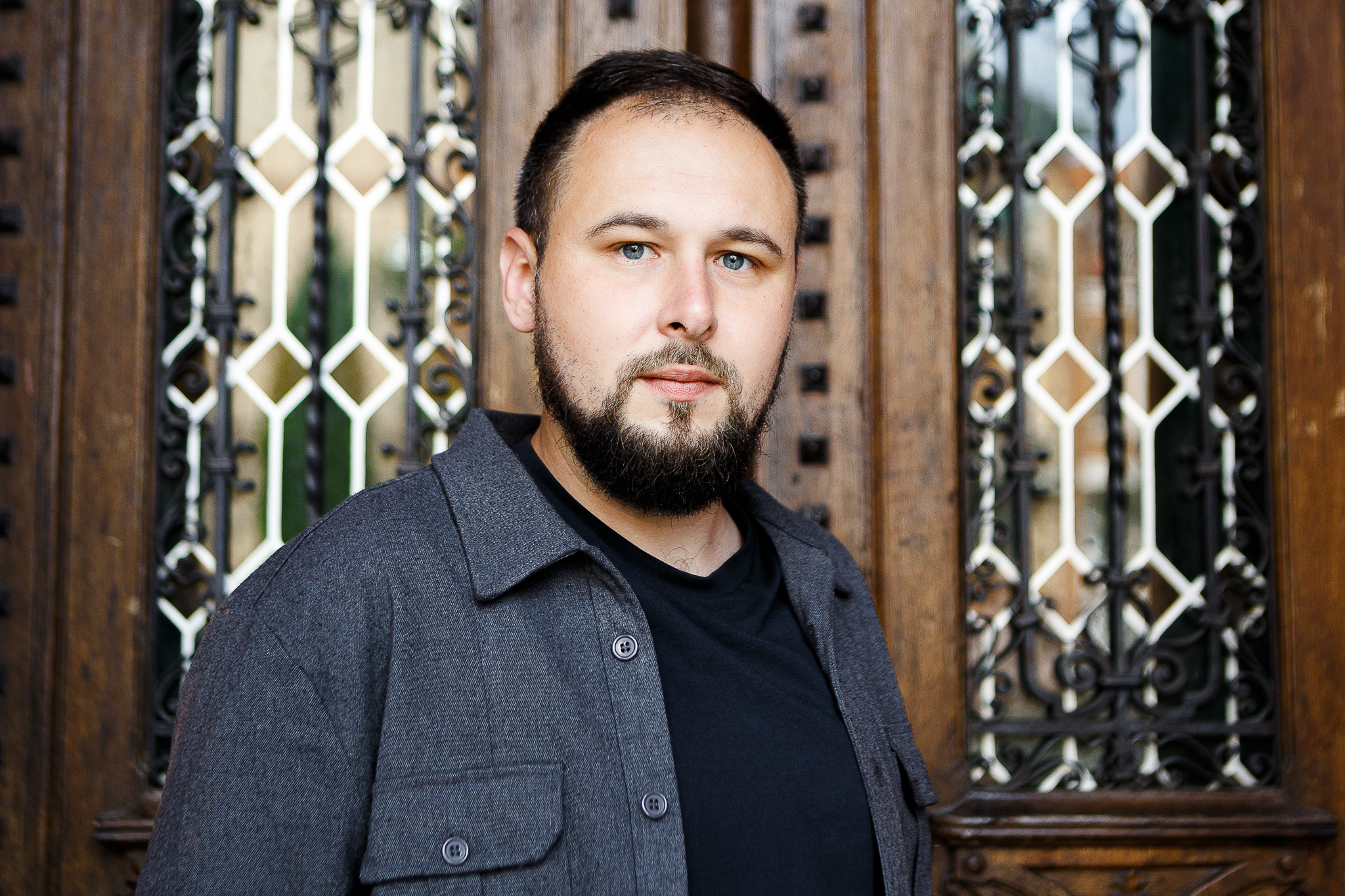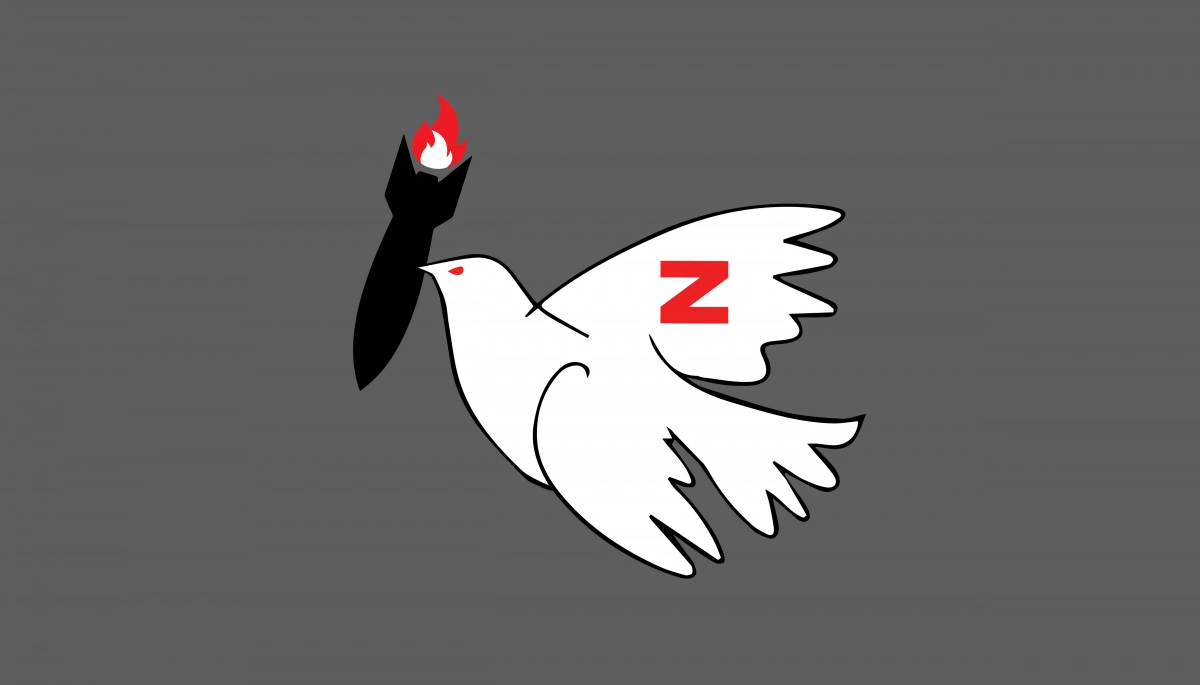



How does the Russian propaganda machine manipulate key narratives to divert focus from Ukraine’s peace proposal toward schemes that align with Russia’s interests?
Detector Media has observed an increased prevalence of alleged peace formulas in the media sphere in early 2023. A number of political leaders proposed their respective initiatives: China’s and Brazil’s presidents, as well as Turkey’s president, who has been engaged in conflict mediation efforts for several years. What do they have in common? Notably the exploitation of their peace endeavors by the Russian propaganda machine. This tactic is used to overshadow the Ukrainian peace initiative known as the Ukrainian Peace Formula.
Analysts at Detector Media inspected the Ukrainian, domestic Russian, and Russian-controlled segments of Telegram within the occupied territories to understand the context in which each initiative was mentioned and the malicious narratives propagated about them.
So, what peace plans are we referring to?
Early in 2023, the freshly elected Brazilian government under the leadership of President Luiz Inácio Lula da Silva expressed the urgency to bring peace to Ukraine. Specifically, they suggested the formation of a contact group including China, India, and Indonesia to aid in peace negotiations between Ukraine and Russia. We wrote about the media coverage of Lula’s proposal previously, yet no tangible actions or a settlement roadmap were outlined.
South African diplomats also advocated for peace in Ukraine, proposing similar concepts for negotiation formats that involve non-Western nations. On February 24, 2023, when Beijing unveiled its peace initiative, it seemed to reiterate China’s past stances: juxtaposing elements favorable to Ukraine (an explicit assertion of sovereignty rights) with aspects serving Russia’s interests (criticisms of NATO expansion and Western sanctions). Contrasting with Brazil’s advocacy for a contact group, China has not suggested any strategies to engage the parties in discussions. Chinese officials have yet to make strides to gain international or UN recognition for their initiative, much like Brazil’s lack of pursuit of official UN endorsement for its ideas.
During the G20 Leaders’ Summit in November 2022, Ukrainian President Volodymyr Zelenskyy unveiled the Ukrainian peace formula. It encompassed the restoration of full Ukrainian control over the Zaporizhzhia NPP, stability in grain deals and an increase in Ukrainian grain exports to developing countries, and compensation for all damages inflicted by Russia, among other things. The UN General Assembly backed the Ukrainian draft resolution “On a Just and Lasting Peace in Ukraine” on February 23, 2023, with 141 out of 193 votes.
As Ukraine strives to engage more nations in the implementation of its peace formula, the Russian propaganda machine is diligently working to undermine the Ukrainian initiative. As demonstrated in the graph, the smear campaign coincided with the UN vote.
The proposals from China and Brazil, German “Kremlin sympathizers,” and the peacekeeping mission of the Turkish president are being leveraged by the Russian propaganda machine to distract from the Zelenskyy plan. To manipulate peace-related discourse, propagandists employ several extremely hypocritical arguments: China has supposedly agreed on its peace plan with Russia; Beijing challenges US dominance in foreign policy; even supposedly neutral Latin American states side with Russia; “true Germans” back Russia as they understand Germany’s “historical responsibility for peace in Europe”, forming a pseudo-Berlin-Moscow-Beijing-Brazil axis.
Methodology
Detector Media conducted an analysis of nearly fourteen thousand posts in Ukrainian, domestic Russian, and Russian segments of Telegram on the occupied territories provided by Semantrum. The term “domestic Russian segment” refers to posts by profiles, pages, groups, and channels located in Russia or indicating Russia as their location. The “occupation segment” refers to groups and channels whose geolocation is both Ukraine and Russia but primarily targeting audiences in the temporarily occupied Ukrainian territories.
Monitoring period: January 14 - March 14, 2022.
Further details about the methodology can be found here.
In the following section, we delve into what pro-Russian Telegram users have said about each of the peace initiatives.
China’s plan
Marking the anniversary of the onset of Russia’s full-scale war against Ukraine, the Chinese Foreign Ministry unveiled its “peace plan.” This 12-point initiative comprised recommendations for a ceasefire, respect for all countries’ sovereignty, and a renouncement of the “Cold War mentality,” among other propositions. However, the Ukrainian government and its Western allies met the document with skepticism, criticizing it for its lack of actionable steps to end the war.
“Zelensky Rejected China’s Plan”
The study found that the most common narratives were attempts to rationalize why Volodymyr Zelenskyy turned down China’s peace plan and why Ukraine supposedly does not desire peace. One such justification was the archetypal Russian disinformation assertion that “Ukraine is a Western puppet.” These posts claimed that the West imposes its terms on Ukraine and that “Brussels and Washington’s plans” do not involve peace in line with the Chinese formula. The narrative suggested that Ukrainians are allegedly sacrificing their lives for the “collective West” in its campaign to dismantle Russia. This message was propagated on popular Russian and occupation Telegram channels, citing a supposed Chinese source.
Equally popular were accusations of incompetence and corruption against the Ukrainian President and his administration. Propagandists from the aggressor country contended that war is the only means for the Ukrainian leadership to stay afloat, as financial and military aid is allegedly being misappropriated. Therefore, instead of backing Xi’s peace initiative, Zelenskyy is purportedly demanding “ongoing Western arms supplies and financial support.” This narrative is a recurring theme in Russian propaganda, aimed at discrediting Ukraine’s leadership in the eyes of its Western allies.
The proposition that “the inept comedian Zelensky fails to comprehend genuine peacekeeping intentions and responds to peace offers with yet another shelling” was also a key conclusion drawn by the Russian propaganda machine. Coupled with this was the manipulative assertion that the rejection of China’s peace plan results in the continued daily loss of Ukrainian civilian lives. This is a tactic employed by Russian propaganda to shift the blame for its war crimes onto Ukraine.
Consequences for Russia
The Russian propaganda machine portrayed Xi Jinping’s plan in a range of assessments, from beneficial to Russia to relatively neutral. Propagandists majorly promoted the narrative that “China’s plan is advantageous to Russia because it lacks Western endorsement.” The authors of these posts attempted to paint the aggressor as the harbinger of peace, distorting reality to suggest that Russia is the most desirous of peace. In these narratives, Ukraine was often diminished to the role of a “NATO puppet.”
Furthermore, pro-Russian social media users perceived the “China Plan” as a testament to the enduring friendship and partnership between Beijing and Moscow. Such narratives frequently proposed that China would provide military and economic support to Russia. The Russian propaganda machine was particularly active in generating posts that sought to convince audiences that the “China plan” would prove beneficial by triggering the removal of anti-Russian sanctions and cessation of arms supplies to Ukraine.
Pro-Russian users also evaluated not only the Western reaction to the Chinese peace initiative but the nature of the “China plan” itself. A recurring narrative was that “Xi’s plan is inherently an anti-American stance that includes no criticism of Russia’s actions.” This is a manipulative interpretation as the Chinese peace plan advocates respect for the sovereignty of independent states, which should be understood as a call for Russia to withdraw its troops from the occupied territories.
The Russian propaganda machine further propagated allegations that China had negotiated its plan in advance with Russia. The primary aim of the initiative is purportedly to demonstrate to the world that neither the West nor Ukraine intends to seek a peaceful resolution to the war. Certain Telegram channels disseminated disinformation suggesting that the “China plan” is a call for Russia to take more drastic measures and “split Ukraine into two Koreas.” According to this narrative, Ukraine should be divided along a conventional line of demarcation. This propaganda message nullifies Ukraine’s right to sovereignty over the occupied territories and legitimizes aggression. The Russian propaganda machine continues to seek justifications for its unlawful actions, this time exploiting the “China plan”.
However, not all pro-Russian social media users held such “optimistic” views on the implications of the “China plan” for Russia. During our research, we encountered cautiously neutral evaluations of Xi’s peace initiative. Some posts claimed that the “China plan” was an expression of neutrality and that China would not openly support Russia’s actions. Similar implications were found in messages suggesting that China was “playing its own game” and laying the foundation for a future “league of peacekeeping states.”
Such propositions surfaced alongside other narratives that a bipolar world is not in China’s interests. These messages were not entirely neutral and contained concealed manipulations of Russian propaganda as if the aggressor country remained China’s favored ally. However, Russia would play a substantial role in the global order if the Chinese initiative were to be implemented.
The Effect of the “Chinese Peace Plan” on the West
Propagandists also discussed the reactions of global leaders to China’s “peace plan.” The primary target of criticism was the United States. Some posts suggested that China’s peace initiative was allegedly an effort to curb US dominance in foreign policy. Pro-Russian social media users attempted to persuade audiences that the Chinese initiative was a scheme to hinder NATO’s eastward expansion, labeling it a “sabotage against the Western peace plan.” This manipulation was employed to rationalize the United States’ non-support of the Chinese plan. The aggressor country sought to mask its war crimes against Ukraine by shifting the blame onto the United States and NATO. Detector Media has previously discussed the tactics of equivocation employed by the Russian propaganda machine.
The Russian propaganda machine also conveyed the idea that, unlike China, the West has a vested interest in prolonging the war. It asserted that China, through its peace plan, was signaling and urging the West towards peace, as otherwise, “Russia would triumph in the summer of 2023.” In this instance, Russian propaganda uses fearmongering, assuring the audience that the Russian military allegedly possesses a military advantage (even when it doesn’t) and that “Russia’s victory is inevitable.”
Regarding other nations, it was reported that Hungary, Brazil, and Kazakhstan endorsed the Chinese peace initiative. However, the European Union was lambasted in pro-Russian TV broadcasts for its purported refusal to support the “China plan.” Specifically, EU High Representative for Foreign Affairs and Security Policy Josep Borrell and German Prime Minister Olaf Scholz faced criticism. The broadcasts also insinuated that Polish President Andrzej Duda was apprehensive about China’s stance, despite his rejection of the Xi Plan, implying that “Poland is not prepared to jeopardize its robust economic relationship with China for Ukraine’s sake.” In reality, Andrzej Duda is among the primary global leaders who consistently and actively support Ukrainian sovereignty. He has unequivocally stated that negotiations cannot proceed without considering Ukraine’s interests.
The analysis also unearthed a narrative suggesting that China’s “plan” is not targeting the United States and Ukraine but Europe. Russian propagandists proposed that by including a post-war Ukrainian economic recovery clause in the plan, China intends to “economically colonize Ukraine.” To achieve this, it would need to install “a political regime suitable to replace Zelenskyy’s government” post-war. The post authors explained that China aims to “acquire experience in socio-economic reconstruction of a large country through peacekeeping,” or more precisely, “to buy Ukraine from the West.” This narrative is built on the three pillars of Russian manipulation: “a regime change is necessary that will suit Beijing and Moscow,” “halt the fascization/nazification of Ukraine,” and “prevent NATO’s eastward expansion.”
Criticism of the Plan
The Chinese initiative did not escape criticism either. One of Russia’s largest disinformation Telegram channels asserted that the Chinese plan is “an odd document that is clearly unfeasible,” which supposedly benefits not Russia but only China. The channel suggested that China allegedly has interests in extending Russia’s war against Ukraine as long as possible, which would weaken the aggressor nation. In essence, the authors tried to convince their audience that China’s objective is to supplant Russia in the emerging bipolar world of the United States-China, rather than to support Russia.
There were narratives suggesting that China exploits Russia’s inexpensive energy resources, thereby rendering the peace plan utopian. In other words, some pro-Russian users tried to convince their audience that Xi’s peace initiative “primarily benefits China and Kyiv, but not Moscow.” Additional posts claimed that China’s initiative was entirely vague, as it lacked concrete steps.
Ukrainian Formula for Peace
The Zelenskyy Formula, or Ukraine’s peace plan, was initially introduced at the G20 summit in November 2022. The proposals contextualize Ukraine’s issues on a global scale. For instance, the situation at the Zaporizhzhia NPP is framed as a matter of worldwide nuclear safety, the sale of Ukrainian grain is portrayed as essential for food security, and the integrity of Ukraine’s energy system is viewed as crucial to global energy security. The matter of preserving Ukraine’s environment and environmental safety is intricately linked with the global context. The document demonstrates how Ukraine’s situation directly influences global processes across numerous sectors. Concurrently, the plan is dedicated to safeguarding Ukraine’s interests: the halt of hostilities and the total withdrawal of Russian forces, the return of prisoners of war and deportees, fair compensation for victims of aggression, and the prosecution of those who organized and executed the aggression. The Ukrainian formula for peace emphasizes the creation of a clear and secure post-war global architecture: security guarantees for Ukraine and a definitive declaration of the war’s end.
The Ukrainian formula for peace received official support from the United States, Canada, the United Kingdom, Japan, Turkey, India (with reservations), the European Union collectively, and 8 of its member states individually. On February 23, 2022, the UN General Assembly adopted a draft resolution that integrates the key elements of the “peace formula” proposed by Ukraine. The “formula” revealed Ukraine’s sovereignty and eagerness for peace negotiations to the world, significantly undermining the Russian propaganda narrative that Ukraine does not desire peace.
The Russian leadership, however, vehemently rejected the peace initiative put forward by the Ukrainian government. Foreign Minister Sergei Lavrov dismissed the Ukrainian peace formula as “a clumsy initiative that throws everything together, and negotiations are out of the question.” Putin’s chief diplomat also asserted that negotiations were unfeasible because Volodymyr Zelenskyy had supposedly “legally prohibited negotiations with the Russian government.” On March 22, 2023, following Chinese President Xi Jinping’s visit to Moscow, Putin’s spokesman Dmitry Peskov stated that the leaders of China and Russia had not discussed Ukraine’s peace plan.
During the study, Detector Media analysts noted a scarcity of mentions of Zelenskyy’s peace plan. This scarcity is because, from Russia’s perspective, the Ukrainian peace formula represents the worst possible resolution to the war, and thus the official propaganda did not wish to enhance its popularity and credibility.
Nonetheless, posts by pro-Russian Telegram users contained assertions that Russia had already won the war and Ukraine had lost, so a peace treaty was feasible only on the Kremlin’s terms. Simultaneously, the posts suggested that Russians would not object if other neighboring states (Poland, Hungary, and Romania) assumed control of the western regions of Ukraine.
The posts also argued that the Ukrainian Peace Formula was devised as a distraction and not to implement a genuinely effective Chinese peace plan. In essence, it is a stillborn alternative to Minsk-3. The authors of such posts evaluated the plan as an unpopular and doomed format and drew parallels to their manipulations about the Crimean Platform as an example. We have written more extensively about how the Russian propaganda machine discredited the international coordination mechanism for the return of Crimea here.
The study also encountered posts featuring comments from Russia’s UN representative, Vasily Nebenzya, who declared that the Ukrainian peace plan was worthless and a mockery of peaceful resolution developed by “clowns and drug addicts.”
The propagandists are attempting to discredit the Ukrainian peace formula and reduce it to a “frivolous joke.” They assert that the initiative was conceived by novices with little comprehension of the situation. To this end, the Russian propaganda descends into personal attacks and appeals to President Zelenskyy’s comedy background and echoes the fake that “Zelenskyy is a drug addict” generated during the 2019 Ukrainian elections.
Plans from Other Peacekeepers
Lula’s Plan
Brazil’s president, Luiz Inácio Lula da Silva, asserts that neither Russia nor Ukraine truly desires peace, implying that they should not be part of any negotiations. Lula’s initiative involves the creation of a “peace club” comprising neutral states, such as China, Indonesia, and India. These countries would negotiate and resolve the situation without involving Russia or Ukraine. The Brazilian leader, however, did not elaborate on specific mechanisms for conducting such peacekeeping negotiations.
Despite Brazil’s insistence on its neutrality and impartiality, we believe its plan is designed to elevate the status of BRICS (Brazil, Russia, India, China, and South Africa), an organization that the Kremlin looks to for support. Some members aid Russia in bypassing sanctions: India and China have become the primary purchasers of Russian oil, which has been displaced from the West; China has expressed readiness to increase its imports of natural gas from Russia; Brazil has shown interest in investments from the Russian gas giant Gazprom. BRICS members resist Western dominance, but they can’t be labeled as Moscow’s allies. They are capitalizing on the situation to acquire Russian resources cheaply.
Russian propaganda has welcomed Brazil’s initiative. A key message from the propagandists is that Latin America does not supply weapons to Ukraine, the region is on Russia’s side, and Brazil has even developed its own peace plan. Indeed, the presidents of Brazil, Argentina, and Colombia have declined to supply Ukraine with their weapons (including those of Russian make) in exchange for the latest Western models. During his Latin American tour in January, German Chancellor Olaf Scholz proposed an exchange to President Lula, who steadfastly refused, asserting that he did not want his country to receive anything from the Alliance.
This policy is not motivated by a desire to appease Russia but rather by a wish to stay away from NATO and refrain from military cooperation. Historical American military intervention in the region, as well as the perception of NATO as a symbol of Western imperialism, have fueled suspicion. Instead, Brazil’s stance reflects its geopolitical ambitions at the nexus of American, European, Russian, and Chinese interests. Additionally, Lula is utilizing the war to regain his own regional influence, lost during the reign of his predecessor, Jair Bolsonaro.
Another narrative pertained to military support for Ukraine. One peace initiative is purportedly worth more than thousands of shells or tanks, so Russia highly values Lula’s diplomatic efforts and his reluctance to “stoke the flames of conflict” by transferring weapons, unlike the “Western world” allegedly does. This message reiterates the Kremlin’s assertion that supplying Kyiv with the latest weapons only prolongs a war that Russia is certain to win. The Kremlin dreads a domino effect: if one state in the region decides to supply Ukraine with military equipment or ammunition, this move will encourage others to make similar decisions.
Russian propaganda portrays Brazil as a neutral state, thereby attempting to boost the legitimacy and credibility of the Lula plan. This message is part of a broader and absurd propaganda narrative that “even neutral states are on Russia’s side.”
Although Brazil professes that the cornerstone of its foreign policy is equidistance, it has recently sold weapons to other countries at war. Since the war in Yemen began in 2014, Brazil has supplied more than 21,000 tons of weapons and ammunition worth $680 million to Saudi Arabia and the United Arab Emirates, including cluster munitions banned by international convention.
Erdoğan the Peacemaker
Despite Turkish President Recep Tayyip Erdoğan not presenting a specific roadmap for resolving the conflict (like China did), his role as a peacemaker is significant. Turkey has acted as a mediator between Ukraine and Russia, helped implement the Black Sea Grain Initiative, and played a crucial part in prisoner exchanges. The relationship between Ankara and Moscow is multifaceted: Turkey is a major consumer of Russian gas, and Russia has initiated a substantial project to construct a nuclear power plant in Turkey. Yet, the two nations also have points of contention: Syria, Libya, and Nagorno-Karabakh. The Turkish military company Baykar has supplied Ukraine with Bayraktar TB2 surveillance and attack drones, the impact of which cannot be overestimated. However, official Ankara does not endorse anti-Russian sanctions, attributing this stance to “national interests.” Erdoğan’s criticism and skepticism towards the West’s support for Ukraine should also be noted, he has alleged that “the West is pursuing a provocation-based policy” and supplying “obsolete” instead of state-of-the-art weaponry.
The Turkish Foreign Ministry voiced its support for the Ukrainian peace formula, which incited a barrage of criticism from Russian propagandists. This is one of the main reasons Erdogan appeared frequently in Russian peace-related news during the monitoring period. Among other sentiments, pro-Russian Telegram users likened Erdogan’s attempts to reconcile Zelenskyy and Putin to the utopian endeavors to bridge Stalin and Hitler during World War II.
As Turkey provides Ukraine with weaponry, Russian propaganda aims to undermine President Erdogan’s peacekeeping efforts. In early January 2023, Erdogan advocated for a unilateral ceasefire, directly accusing Putin of aggression and reiterating the illegitimacy of his actions.
“Dove of Peace” with Right-Wing Wings
In February 2023, the Munich Security Conference was convened, with the Ukrainian issue being a major topic. The conference gathered hundreds of politicians and officials to identify effective mechanisms for restoring global peace. This year, representatives from the right-wing extremist party, Alternative for Germany (AfD), the third-largest faction in the Bundestag, were barred from participating, leading them to organize a protest rally against support for Ukraine and arms provision. Prior to the Munich conference, this political party proposed a “peace initiative” in the Bundestag that included security guarantees for both Ukraine and Russia. As a “first step,” they suggested that “support for Ukraine should be contingent upon Kyiv’s readiness to engage in serious peace negotiations and display a willingness to engage with Russia.” The German right-wing radicals proposed establishing UN-mandated territories in Luhansk, Donetsk, Zaporizhzhia, and Kherson regions; pulling out Russian troops beyond the frontline as of February 24, 2022, while progressively curtailing military support for Ukraine; and compelling Ukraine to renounce its NATO membership and withdraw sanctions against Russia. Given the party’s close ties to the Kremlin, Russia’s substantial funding of the party, AfD members’ visits to the occupied territories of Ukraine in violation of Ukrainian law, and meetings with the Belarusian dictator, the pieces of the “peace initiative” and “peace rally” puzzle come together easily.
During the monitoring period, we observed pro-Russian Telegram users lauding initiatives by AfD while denouncing Bundestag members who criticized the pseudo-project of these right-wing radicals. They particularly extolled the party’s stance of “moderate understanding of Russia” and their calls for “Germany’s historical responsibility for peace in Europe.” In 2022, a member of this “moderate” party was brought to trial on suspicion of making a Nazi salute during a rally. The court dismissed any violation, but the prosecutor’s office lodged an appeal. This “moderate understanding” seems to equate to overtly advocating for Russian interests, and the “historical responsibility for peace” appears to imply coercing Ukraine into capitulation. This “understanding of Russia” is also evident when AfD members participate in Vladimir Solovyov’s propaganda show, arguing that it was not Russia that attacked Ukraine but German officials who attacked the Kremlin.
Such initiatives generate information clutter, a tactic leveraged by Russian disinformers. They assert that rational Germans support us, while average Europeans do not back Ukraine and organize thousand-strong rallies against “war financing.”
Conclusions
The Russian propaganda machine has adopted a strategy of devaluing the Ukrainian peace formula, demoting it to a mere “frivolous joke.” Propaganda seeks to convince the world that the execution of the Ukrainian plan is an impossibility due to Russia’s military victory and Ukraine’s defeat. However, propagandists carefully avoid excessive criticism of the initiative to prevent boosting its popularity and sparking serious debate.
Propagandists recognize that the Ukrainian option garners support from many Western nations, while alternative “plans” often face criticism. Therefore, Russian propaganda deliberately “drowns out” the Ukrainian voice, saturating the media landscape with narratives about far less feasible peace initiatives.
In discussing peace plans, Russian propaganda employs several recurring narratives: The West profits from war; NATO is instigating further escalation in Ukraine; Ukraine is merely a puppet of Western countries, hence its refusal to accept any peace initiatives; Zelenskyy’s incompetence renders his “peace formula” pointless; supplying arms to Ukraine only intensifies the war.
The Ukrainian peace formula is sort of a maximum goal for Ukraine. Full implementation may only be feasible if Russia suffers significant military defeats, an acute domestic political or economic crisis within the aggressor country, or other factors in favor of Ukraine. The plan is highly disadvantageous for Russia, and its implementation would essentially signify Russia’s surrender.
Conversely, discrediting the Ukrainian peace plan and advocating other settlement options pose a threat not only to Ukraine but also to global security. Such rhetoric could divert the international community’s attention and undermine the unity of the pro-Ukrainian coalition, which has already backed the Ukrainian peace formula at the UN General Assembly.
In other peace plans, Russia is not portrayed as an aggressor but merely as a “party to the conflict.” This perspective would enable Putin’s regime to evade accountability for numerous crimes against humanity committed in Ukraine, subsequently rebuild its war-ravaged military and industrial complex, and pose an even greater risk not only to Ukraine but to global security at large.
Furthermore, these alternative plans fail to address how to restore Ukraine’s borders, potentially setting a dangerous precedent for unpunished violations of a state’s territorial integrity.


